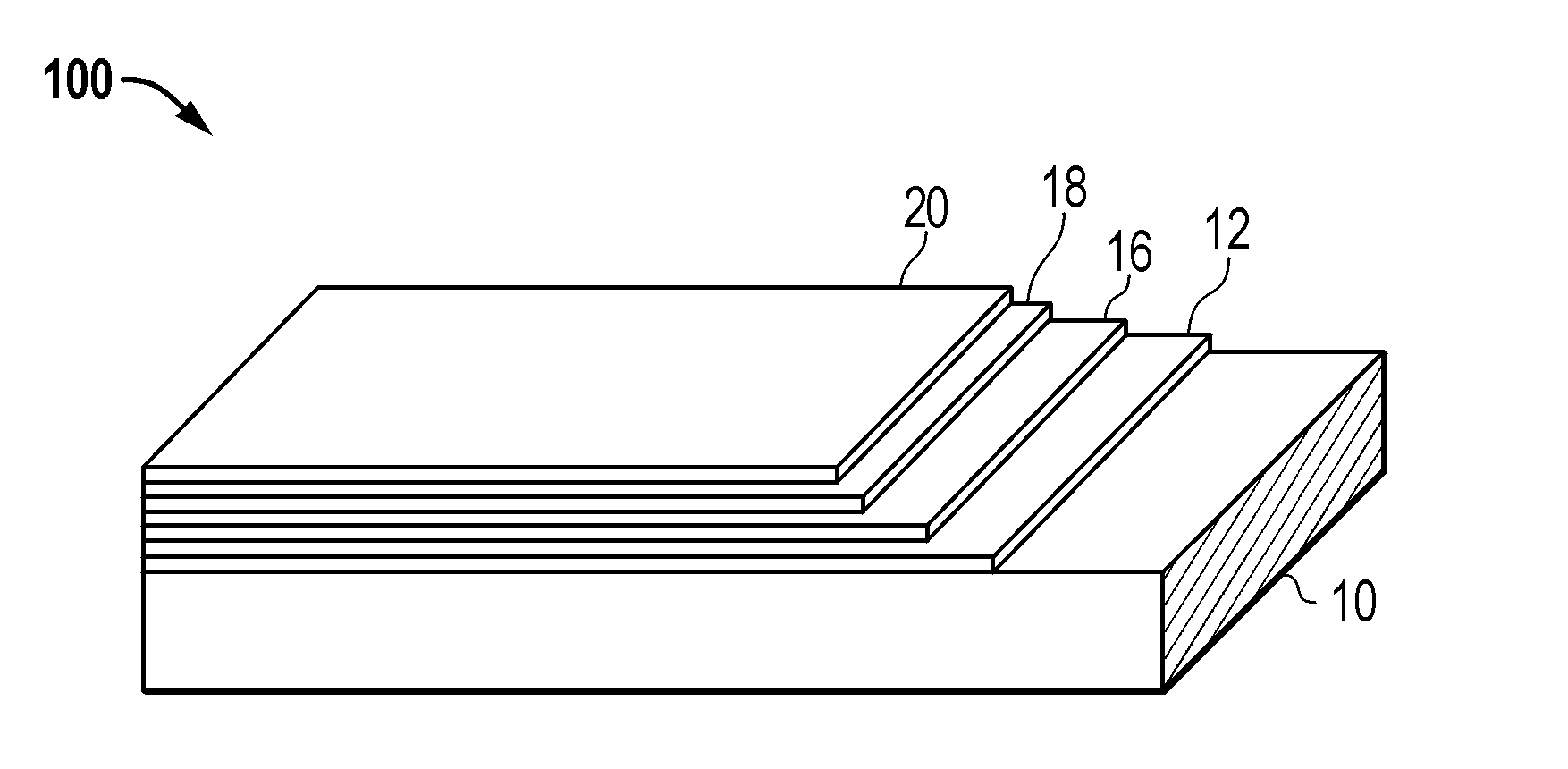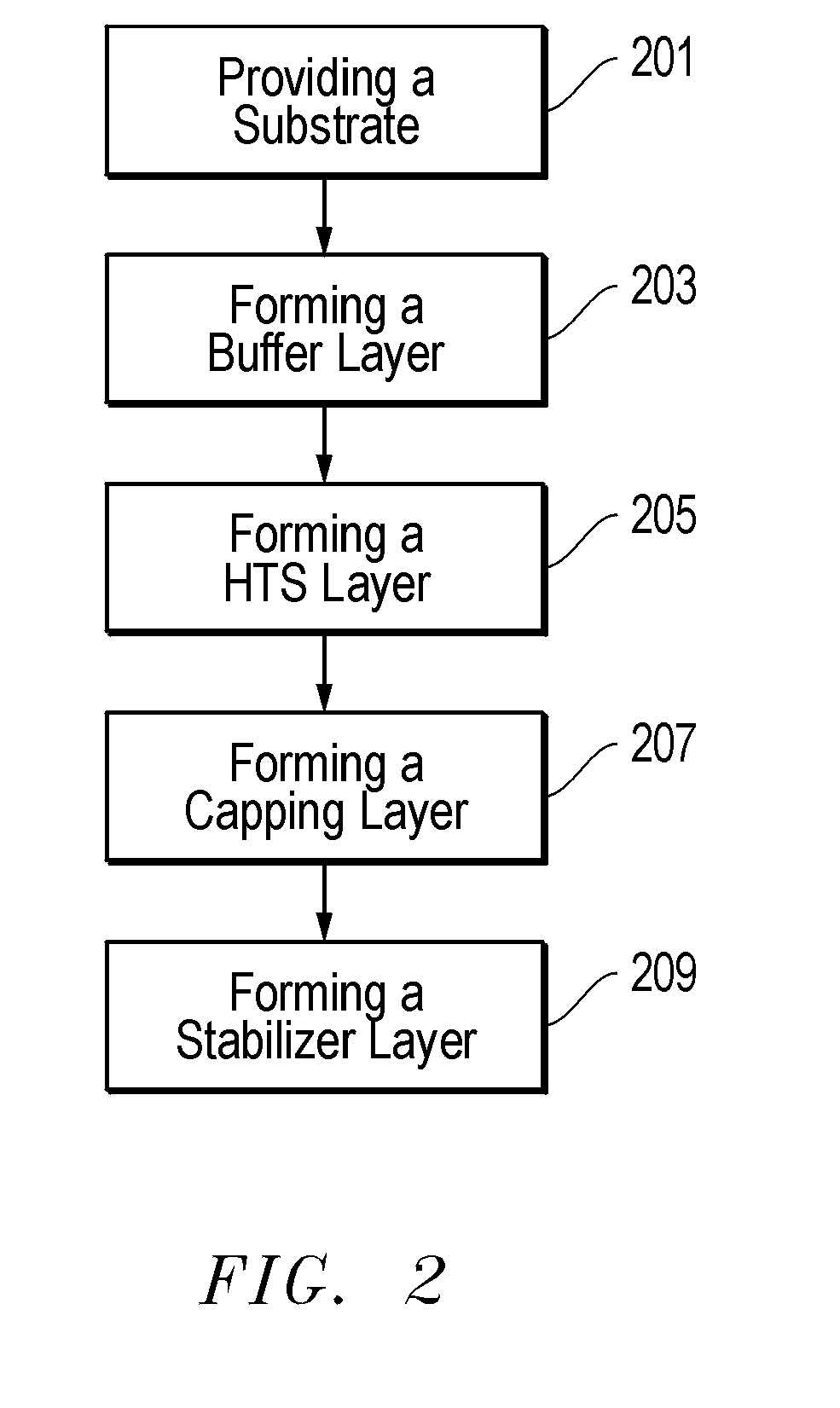Superconducting article and method of making
a technology of superconducting articles and articles, applied in the direction of superconducting magnets/coils, superconductor devices, magnetic bodies, etc., can solve the problems of numerous engineering and manufacturing challenges, tapes do not represent commercially feasible products, and continue to exis
- Summary
- Abstract
- Description
- Claims
- Application Information
AI Technical Summary
Problems solved by technology
Method used
Image
Examples
Embodiment Construction
)
[0021]Turning to FIG. 1, a general layered structure of a superconducting article is depicted for illustrative purposes. The superconducting article includes a substrate 10, a buffer layer 12 overlying the substrate 10, and a superconducting layer 16. Optionally, the superconducting article can also include a capping layer 18 over the superconducting layer, which typically includes a noble metal layer. The superconducting article can optionally include a stabilizer layer 20, which typically includes a non-noble metal.
[0022]According to one embodiment, the formation of a superconducting article includes providing a substrate 10. The substrate 10 is generally metal-based, and typically, an alloy of at least two metallic elements having a desirable creep, chemical and mechanical properties, including coefficient of expansion, tensile strength, yield strength, and elongation. For example, Inconel® metal alloys or Hastelloy® metal alloys exhibits such properties. Metals such as these ar...
PUM
| Property | Measurement | Unit |
|---|---|---|
| Ra | aaaaa | aaaaa |
| thickness | aaaaa | aaaaa |
| critical temperature Tc | aaaaa | aaaaa |
Abstract
Description
Claims
Application Information
 Login to View More
Login to View More - R&D
- Intellectual Property
- Life Sciences
- Materials
- Tech Scout
- Unparalleled Data Quality
- Higher Quality Content
- 60% Fewer Hallucinations
Browse by: Latest US Patents, China's latest patents, Technical Efficacy Thesaurus, Application Domain, Technology Topic, Popular Technical Reports.
© 2025 PatSnap. All rights reserved.Legal|Privacy policy|Modern Slavery Act Transparency Statement|Sitemap|About US| Contact US: help@patsnap.com



